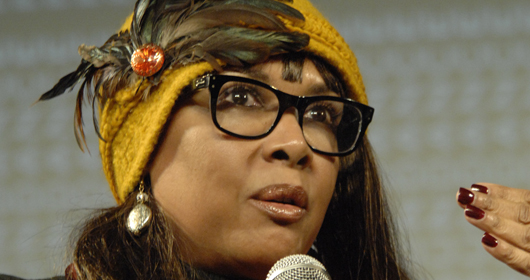 |
| Julie Dash speaking at the 2012 Sundance Film Festival |
In 1991, Julie Dash won the Sundance Excellence in Cinematography Award for Daughters of the Dust. Set in 1902, the film examines the lives of a family’s Gullah (also sometimes called Geechee) culture, which still thrives on the Sea Islands, off the coast of South Carolina and in coastal Georgia.
Recently restored, Daughters of the Dust screened at this year’s Sundance Film Festival, and Dash was interviewed by Nelson George.
George: You grew up in a household with this [Gullah] culture around you even though you grew up in New York City. What’s the journey from there as a child to you deciding to make the film?
Dash: Once I decided I was going to tell stories through film, and once I decided that I was not going to be a documentary filmmaker, but I was going to tell narrative stories (because I was excited about the literature of Alice Walker and Toni Morrison and all the poets of the time), I decided that I wanted to tell a story that was authentic to African American culture – authentic to the point where it was not like something you could turn on the television and see. I wanted it to be more like a foreign film and so deeply into the culture that it appeared to be foreign.
I’m fascinated by her statement about wanting Daughters to be “more like a foreign film.” While it’s safe to say that Gullah culture might be “foreign” to some people in the U.S., I think she’s saying something more. It’s not simply a lack of familiarity, a different language, or a setting outside one’s home country that makes a “foreign film.” It’s a certain quality, a certain uniqueness. When Dash speaks of authenticity, what remains unspoken is reference to depiction of African American experience in other films–she speaks of novelists and poets–and, perhaps, that is what she’s talking about when she talks about the desire for Daughters to appear foreign.
More than 20 years after Julie Dash made Daughters of the Dust, how many “authentic” films do we see?
